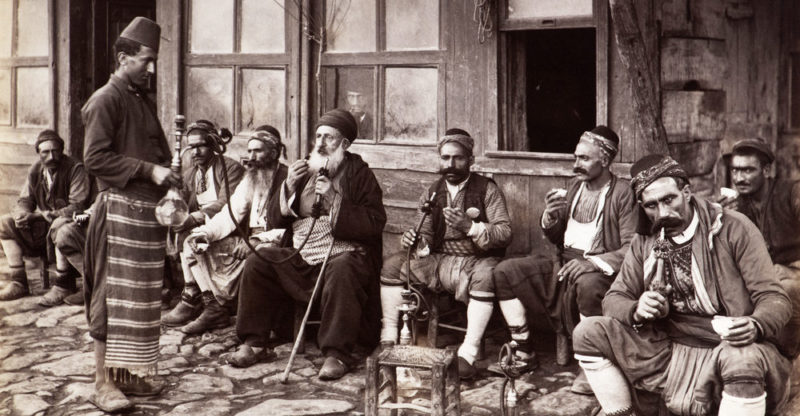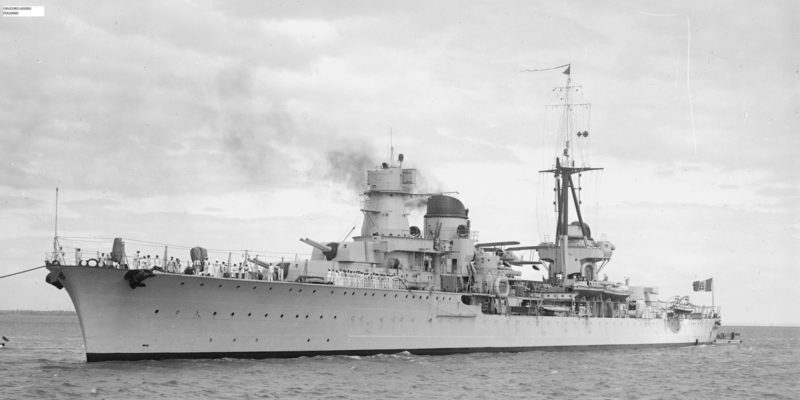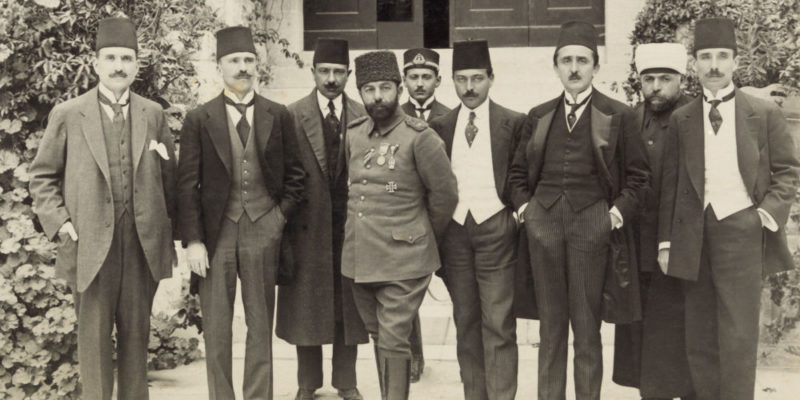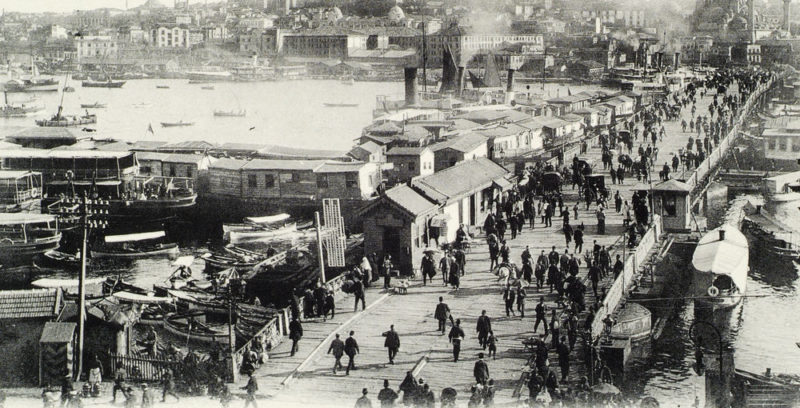We explain what the Ottoman Empire is and what its political-territorial organization was like. In addition, its characteristics, decadence, and more.
What was the Ottoman Empire?
The Ottoman Turkish Empire was a monarchical and multi-ethnic state ruled by the Osmanli dynasty, also known as the House of Oman, a Turkish noble lineage.
Although it began as one of the small Turkish states of Asia Minor, over the centuries it grew to control Southeast Europe, the Middle East, and North Africa, taking part of the world powers of its time.
The Ottoman Empire was responsible for the fall of Constantinople (and with it the Eastern Roman Empire ), a city that has since been renamed Istanbul and became the capital of the Empire, as well as the spread of Islam throughout the African territories.
The Ottoman Empire participated in the First World War (1914-1918), on the side of the Triple Alliance with Germany and the Austro-Hungarian Empire. Towards the end of the conflict, weakened by the Arab Rebellion of 1916, the Ottoman Empire would collapse and give way to the Republic of Turkey in 1922.
Characteristics of the Ottoman Empire:
Source
 The Ottoman Empire had its origins in the decline of the Seljuk Turkish Empire, which ruled Iran and Iraq until King Mehmed II unified the various Turkish states and survived the Mongol invasions. The Turks then besieged Constantinople and wiped out the Eastern Roman Empire, turning that city into the capital of their coming empire - Istanbul.
The Ottoman Empire had its origins in the decline of the Seljuk Turkish Empire, which ruled Iran and Iraq until King Mehmed II unified the various Turkish states and survived the Mongol invasions. The Turks then besieged Constantinople and wiped out the Eastern Roman Empire, turning that city into the capital of their coming empire - Istanbul.
Expansion
The expansionist phase of the Ottoman Empire corresponds to the reign of Osman I (1281-1326), whose policies continued his successors: Orkhan, Murad I, and Beyazid I, annexing the territories of the Byzantine Empire, Bulgaria, Serbia, and the European Balkans.This alerted the Christian nations of Europe, who organized the Hungarian Sigismund Crusade. The splendor of the Ottoman Empire took place between the 16th and 17th centuries.
Strategic importance
 The Ottoman Empire was located as a bridge between East and West, thus occupying a central position in world conflicts for almost six centuries. In its heyday, its territory spanned the territory of three different continents: Europe, Africa, and Asia.
The Ottoman Empire was located as a bridge between East and West, thus occupying a central position in world conflicts for almost six centuries. In its heyday, its territory spanned the territory of three different continents: Europe, Africa, and Asia.
Political-territorial organization
At its peak, the Ottoman Empire consisted of 29 provinces and four vassal states: Moldavia, Transylvania, Wallachia, and Crimea. It was bordered to the west by Morocco, to the east by the Caspian Sea, to the north by Europe and the western Mediterranean, and to the south by Sudan, Somalia, Eritrea, and Arabia.
Religion
 The official religion of the Ottoman Empire was Islam, and the expansion of its territories was due, in principle, to the need to bring religion to the whole world. However, the Turks showed great tolerance for other religions with which they lived, such as Christians or Jews , who had to pay a personal tax in exchange for being considered "protected" ( dhimmi ).
The official religion of the Ottoman Empire was Islam, and the expansion of its territories was due, in principle, to the need to bring religion to the whole world. However, the Turks showed great tolerance for other religions with which they lived, such as Christians or Jews , who had to pay a personal tax in exchange for being considered "protected" ( dhimmi ).However, the assignment of religious authorities to the bureaucratic structure of the Empire brought them in contact with corruption, so that a certain aristocracy of the clergy was formed and had a rather negative effect on the religious morals of the Empire.
War in the Mediterranean

Decline
The Ottoman Empire entered its stage of decline in 1566, after the death of Suleiman the Magnificent . A series of military setbacks, such as the failure of the siege of Vienna in 1683 against a common European army equipped with firearms , and the rise of new incompetent and corrupt monarchs, led to the control of the empire from the shadows by the military leaders. and corrupt officials, weakened the sultanate and caused irreparable territorial losses, at the hands of Christian nationalist movements in Bulgaria, Albania, Serbia and Romania.
Era of reforms
 The era of reforms took place in the 19th century, at the height of the decline of the Ottoman Empire, led by the two sultans Selim III and Mahmud II, who tried to purge the political structure of corruption and create completely new forces to resist the discontent of the Janissaries. , the elite troops of the Ottoman Empire.
The era of reforms took place in the 19th century, at the height of the decline of the Ottoman Empire, led by the two sultans Selim III and Mahmud II, who tried to purge the political structure of corruption and create completely new forces to resist the discontent of the Janissaries. , the elite troops of the Ottoman Empire.In this period the Empire opened up to diplomacy with Western Europe and, towards the end of the century, the first Ottoman Constitution was introduced which converted the old absolutist regime into a parliamentary monarchy.
Drop
 The fall of the Ottoman Empire took place in the framework of the First World War, in which the Prime Minister Enver Pasha involved them, during the reign of Sultan Mehmed V. From 1917 the fight was markedly unfavorable to the Empire, despite the fact that the Russian Revolution withdrew the threat from the northern front. However, the 1916 Arab rebellion, supported by Great Britain, forced an armistice and the withdrawal of its troops to Anatolia.
The fall of the Ottoman Empire took place in the framework of the First World War, in which the Prime Minister Enver Pasha involved them, during the reign of Sultan Mehmed V. From 1917 the fight was markedly unfavorable to the Empire, despite the fact that the Russian Revolution withdrew the threat from the northern front. However, the 1916 Arab rebellion, supported by Great Britain, forced an armistice and the withdrawal of its troops to Anatolia.In 1922 the Ottoman Empire dismembered and renounced its imperial pretensions, as well as the caliphate, and became the Republic of Turkey presided over by Kemal Atatürk.
Armenian Genocide
During the first years of the Ottoman Empire's participation in the First World War, the Armenian Genocide took place, a matter that is still subject to discussion by some international historians.The Ottoman Empire would have persecuted, forcibly expatriated and mass murdered a million and a half of its Armenian subjects , in retaliation to Russian hostilities and to avoid the possibility of the emergence of a sovereign Armenian state favorable to its enemies.
The above content published at Collaborative Research Group is for informational and educational purposes only and has been developed by referring to reliable sources and recommendations from technology experts. We do not have any contact with official entities nor do we intend to replace the information that they emit.
Katheryn is a corporate attorney and finance specialist, conducting research daily to get you closer to financial security and freedom (even if you're just getting started). Her +600 articles published in Collaborative Research Group have already helped thousands of readers on the internet. .
Leave a reply
Your email address will not be published. Required fields are marked *Recent post

Sport: What Is It, Types, Risks, Features, Characteristics and Examples

Dogs: Emergence, Features, Characteristics, Feeding and Breeds

Story: Definition, Elements, Structure, Features and Characteristics

